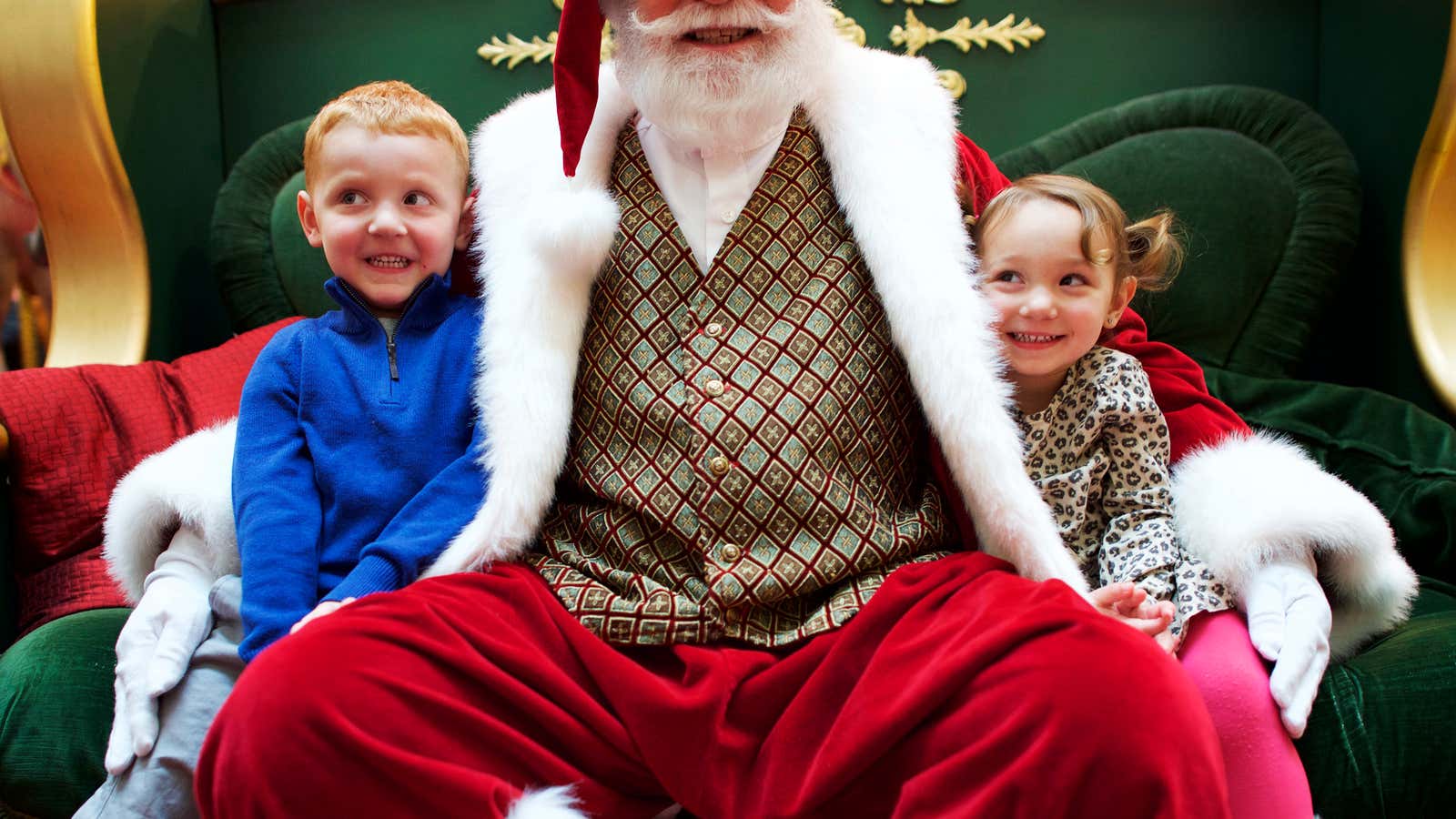Deck the halls with boughs of… gender stereotypes?
Indeed, America’s favorite holiday season wouldn’t be the same without some good old-fashioned sexism. It’s as integral to our celebrations as Santa, sugar cookies, and caroling, and it’s everywhere: in holiday movies, songs, gift giving traditions, retail marketing and (especially) the labor involved in holiday preparations.
Admittedly, I never grasped the full extent of this seasonal sexism until recently. But once I became a parent, I began to notice the oddly predictable way strangers and friends made assumptions about my kids’ toys. People started asking me what dolls my daughter might fancy for Christmas and what trucks my son would like—because of course. Upon closer examination, Christmas in the West is like the 1950s on steroids.
Where to begin? A children’s clothing department is the perfect primer; retailers remain quite adept at perpetuating gender binaries in their outfit displays. Girls’ sections are bursting with frilly dresses and matching hair accessories, while the boys’ sections inevitably feature rows of pants and sweaters. Even clothing as innocuous as pajamas are gendered. I vividly remember having to shop for my daughter’s first Santa pajamas in the boy’s department because the only ones available for girls said obnoxious things like “sugar and spice” or “Mrs. Claus.”
And toy aisles—which are notoriously gendered already—use the winter shopping rush as an excuse to leverage amped up and oozing stereotypes that may have lain dormant during the summer and fall. This is especially evident in annual toy catalogues, like this year’s Toys ‘R’ Us “Book of Awwwesome”: Boys are predominantly featured playing with innovative toys and electronics, while girls appear enamored with princess castles. And the color-coding throughout the pages not-so-subtly indicates which toys ought to appeal to which genders.
And the best part of this festive dystopia? It’s adaptable for all ages. You might outgrow toy catalogues and Santa jammies, but the entertainment industry has ensured our continued entanglement with holiday sexism lasts a lifetime.
If you’ve ever hummed along to Christmas songs or delighted in holiday-themed movies (disclaimer: I still do), you’ve likely been exposed to major gender stereotypes without even realizing it. Lyrics that perpetuate gendered roles and expectations are sprinkled throughout classics like “It’s Beginning to Look a Lot Like Christmas” and “Santa Baby” (which we hear not just on the radio, but in TV shows and movies.) And we can’t forget “Baby It’s Cold Outside,” a song so creepy it’s earned the moniker The Christmas Date Rape Song (and prompted a recent, much needed update).
Arguably, holiday sexism peaks with the unrelenting expectation that women bear the brunt of holiday preparations. You don’t need overtly sexist ads to know this (although they certainly exist)—often the evidence is within our own homes.
Growing up, I watched my mom do it all. She single-handedly decorated the Christmas tree, filled the house with holiday music, did the gift shopping and wrapping, and then spearheaded the entire cleanup. This was my understanding of a normal division of labor—women are primarily responsible for making the holiday experience enjoyable for their families.
This all changed, however, when I found myself married and with children. It didn’t take long for my husband and I to realize that if I was the sole person in charge of all-things holiday, our season wouldn’t be pleasant.
Today, my husband and I split holiday duties evenly. We both do the shopping and gift wrapping, he helps me cook Christmas dinner, and we make tree decorating a family affair. It’s a system I hope my kids will replicate as adults. I don’t necessarily see this as a feminist act, but one of fairness.
Outside the home, there are other small but meaningful ways to combat holiday sexism. For example, take we can all take a cue from the Obamas and reject gendered gifts. Better yet, shop at stores that don’t segregate toys based on gender and support organizations like Let Toys Be Toys. And if you’re watching holiday-themed movies or shows, don’t be afraid to start age-appropriate conversations about sexism or gender roles being shown on the big screen.
Our celebrations shouldn’t come with a side of sexism. It’s antithetical to the spirit of the holidays and it helps to institutionalize harmful precedents. The best gift we can give future generations isn’t one we can wrap and place under a tree; it’s a season free from stereotypes.
